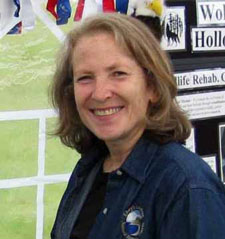Who the Heck was Haller?
Posted July 14, 2014 at 5:30 am by Tim Dustrude
 On most days you can see the bluffs of Whidbey Island from American Camp’s redoubt, but the connections between Whidbey and San Juan run deeper than mere proximity. Learn why from Ebey’s Landing National Historical Reserve interpreter Lynn Hyde during an illustrated talk scheduled at 7 p.m., Friday July 18 in the San Juan island library.
On most days you can see the bluffs of Whidbey Island from American Camp’s redoubt, but the connections between Whidbey and San Juan run deeper than mere proximity. Learn why from Ebey’s Landing National Historical Reserve interpreter Lynn Hyde during an illustrated talk scheduled at 7 p.m., Friday July 18 in the San Juan island library.
The program is free. Call the park at 360-378-2240, ext. 2226 for information.
In the 1850s all western Washington communities faced the Puget Sound—the maritime “Main Street” of the Washington Territory—as distances between European settlements were often much shorter by vessel than they are now by automobile, according to Hyde. Two of the founding fathers of the community that is now Ebey’s Landing National Historical Reserve on Whidbey played important roles in the San Juan Island border dispute between Great Britain and the United States, Hyde said.
Most prominent among them were political leader Isaac Ebey and military leader U.S. Army Maj. Granville O. Haller. Ebey triggered the first international incident when he attempted to collect customs duties from Charles Griffin, agent for Belle Vue Sheep Farm, shortly after nearly 1,400 sheep were landed on the island. As commander of Co. I, 4th Infantry at Fort Townsend, Haller was directly involved in the Pig War crisis of 1859.
“Both helped insure that the international border settled where it is today, and by so doing, forged the historical links between the two communities,” Hyde said.
Hyde is the Education and Outreach coordinator for the Reserve, based in Coupeville. A former high school English teacher from Seattle, she made the move to public history in 2007 in New England. There she was the Director of Education at The Old Manse in Concord, Massachusetts, a partner site of Minute Man National Historical Park.
Her love of Pacific Northwest history brought her home to Washington in 2011 to serve as an interpretive ranger at North Cascades National Park and Klondike Gold Rush National Historical Park in Seattle. In 2012 she joined the Reserve staff to expand their public history offerings, and brings new perspectives on interpreting and preserving historic sites home to the West Coast.
You can support the San Juan Update by doing business with our loyal advertisers, and by making a one-time contribution or a recurring donation.
Categories: Around Here










No comments yet. Be the first!
By submitting a comment you grant the San Juan Update a perpetual license to reproduce your words and name/web site in attribution. Inappropriate, irrelevant and contentious comments may not be published at an admin's discretion. Your email is used for verification purposes only, it will never be shared.